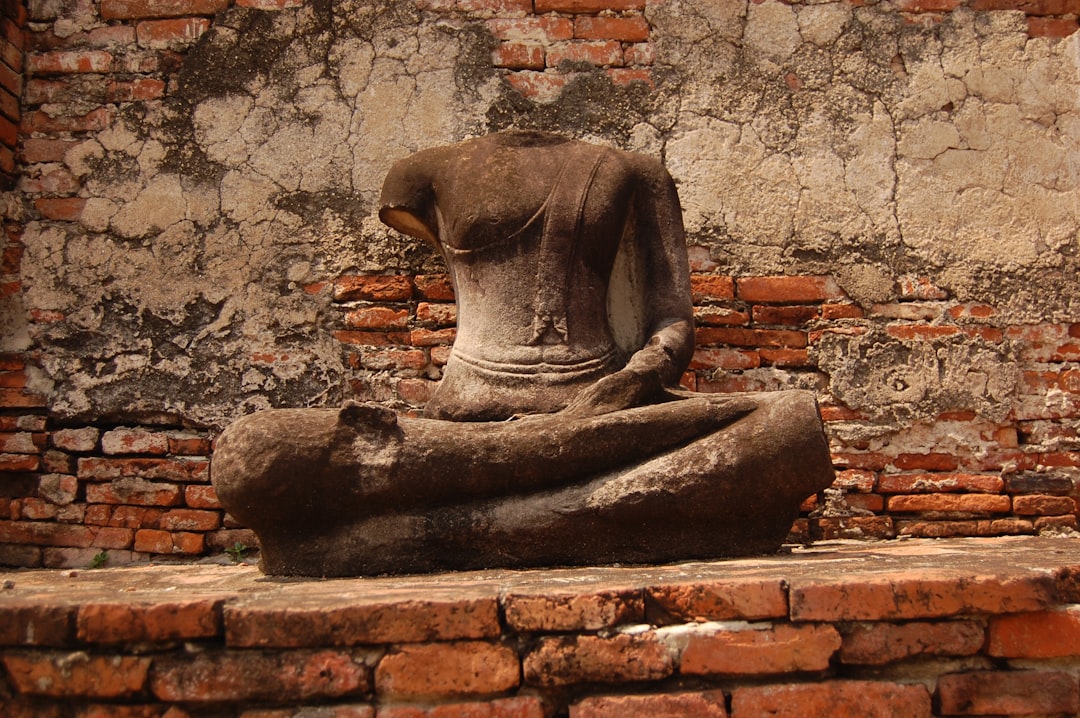The Rise and Fall of a Global Trading Hub
Before you wander through the majestic ruins, it helps to know the backstory. Founded in 1350, the Kingdom of Ayutthaya quickly became a global powerhouse. Its strategic location on an island surrounded by three rivers made it a fortress against invaders and a central point for international trade.
At its zenith, Ayutthaya was a sprawling metropolis with over a million inhabitants, connecting traders from China, India, Portugal, and France. European merchants described it as the grandest city they had ever witnessed, a testament to its wealth and stunning architecture. The temples were lavishly decorated, showcasing incredible craftsmanship.
However, this golden era ended in 1767. After a two-year siege, the Burmese army invaded, burning the city, stealing its treasures, and enslaving its people. The capital was eventually moved to what is now Bangkok, and the glorious city of Ayutthaya was left to ruin. The temples you see today were restored centuries later, earning UNESCO World Heritage status in 1991.
Getting to Ayutthaya from Bangkok: The Nomad-Friendly Way
Getting to Ayutthaya is incredibly simple and cheap, making it an ideal last-minute trip. While several options exist, one stands out for its value and experience.
Train (Highly Recommended)
Departure: Hua Lamphong Station in Bangkok.
Frequency: Trains run about every hour.
Cost: A 3rd class seat costs a mere 15-20 Baht (around $0.50 USD). You can't beat that value.
Travel Time: Approximately 1.5 to 2 hours.
The Experience: It's a scenic, authentic Thai experience. Just show up at the station, buy your ticket, and hop on. No need to book in advance.
Bus or Organized Tour
You can take a bus from the Northern Bus Terminal (Mo Chit), but it's often slower and more expensive than the train. Organized tours offer convenience with bus/river cruise combos (around $55), but they remove the freedom and flexibility that most digital nomads cherish. For the independent traveler, the train is the undisputed winner.
How to Explore the Park Like a Pro
The historical park is located across the river from the train station and is quite spread out. You'll need some wheels to see it all.
Bicycle Rental
Cost: Around 50-60 Baht ($2 USD) for the day.
Pros: Gives you total freedom to explore at your own pace. It's cheap and lets you get up close to the ruins.
Cons: The Thai sun is intense. Start early and bring a hat, sunscreen, and plenty of water.
Motorbike Rental
Cost: About $10-14 USD per day.
Pros: Cover more ground faster than on a bicycle, ideal if you're short on time.
Cons: Thai traffic can be chaotic. Only recommended for experienced riders.
Tuk-tuk Rental
Cost: Roughly 300 Baht ($10 USD) per hour.
Pros: The most relaxed option. Your driver knows the best routes, can suggest a logical temple order, and will wait for you at each stop. Look for the official tourist board outside the station to find a legitimate driver.
Cons: Less freedom and higher cost, but great for a hassle-free day.
The Must-See Temples: A Highlights Reel
With dozens of temples, it's easy to get overwhelmed. Focus on these key sites to get the best experience.
Wat Mahathat: Famous for the iconic Buddha head entwined in the roots of a Bodhi tree. It was built to house sacred Buddha relics. Pro Tip: When taking a photo, kneel down. It is considered disrespectful to be standing higher than the Buddha image.
Wat Ratchaburana: Built to house the ashes of two royal brothers who died fighting each other for the throne. The main prang (tower) is impressive and well-preserved.
Wat Phra Si Sanphet: This was the grandest and most important temple, used as the king's private chapel within the Royal Palace. The three large chedis (stupas) are the most recognizable landmarks of Ayutthaya.
Wat Phanan Choeng: One of the oldest temples, it remains an active place of worship. It houses a massive, 19-meter tall seated golden Buddha that is truly breathtaking.
Wihan Phra Mongkhon Bophit: Located next to Wat Phra Si Sanphet, this modern hall houses a giant bronze Buddha image that survived the city's destruction.
Wat Chai Wattanaram: Situated on the riverbank, this Khmer-style temple is one of the most beautiful, especially at sunset. Its name means "The Temple of Long Reign and Glorious Era." It's a fantastic spot to end your tour.
Essential Tips for Your Visit
Entrance Fees: Many temples require a small entrance fee, typically 50 Baht ($1.50 USD). You can also buy a combination pass for six major temples for 220 Baht ($6.70 USD). Keep small change handy.
Dress Code: These are sacred religious sites, even in ruin. Dress respectfully. This means covering your shoulders and knees. Long pants or a long skirt and a t-shirt are perfect. You'll need to remove your shoes before entering active temples like Wat Phanan Choeng.
Responsible Tourism: You will see opportunities for elephant rides near the park. We strongly advise against this. Opt for pedal or motor power to explore the ruins responsibly and ethically.































